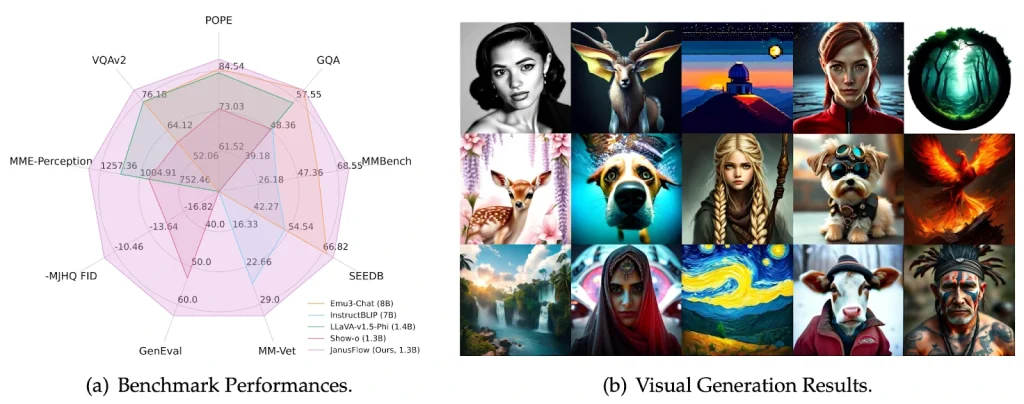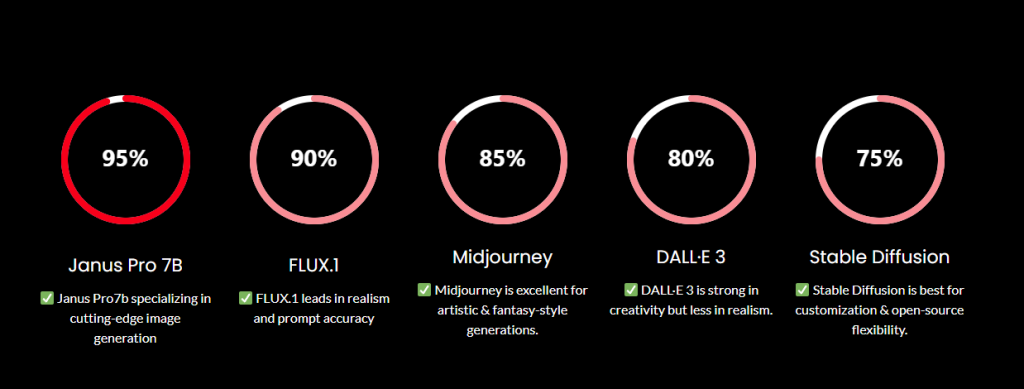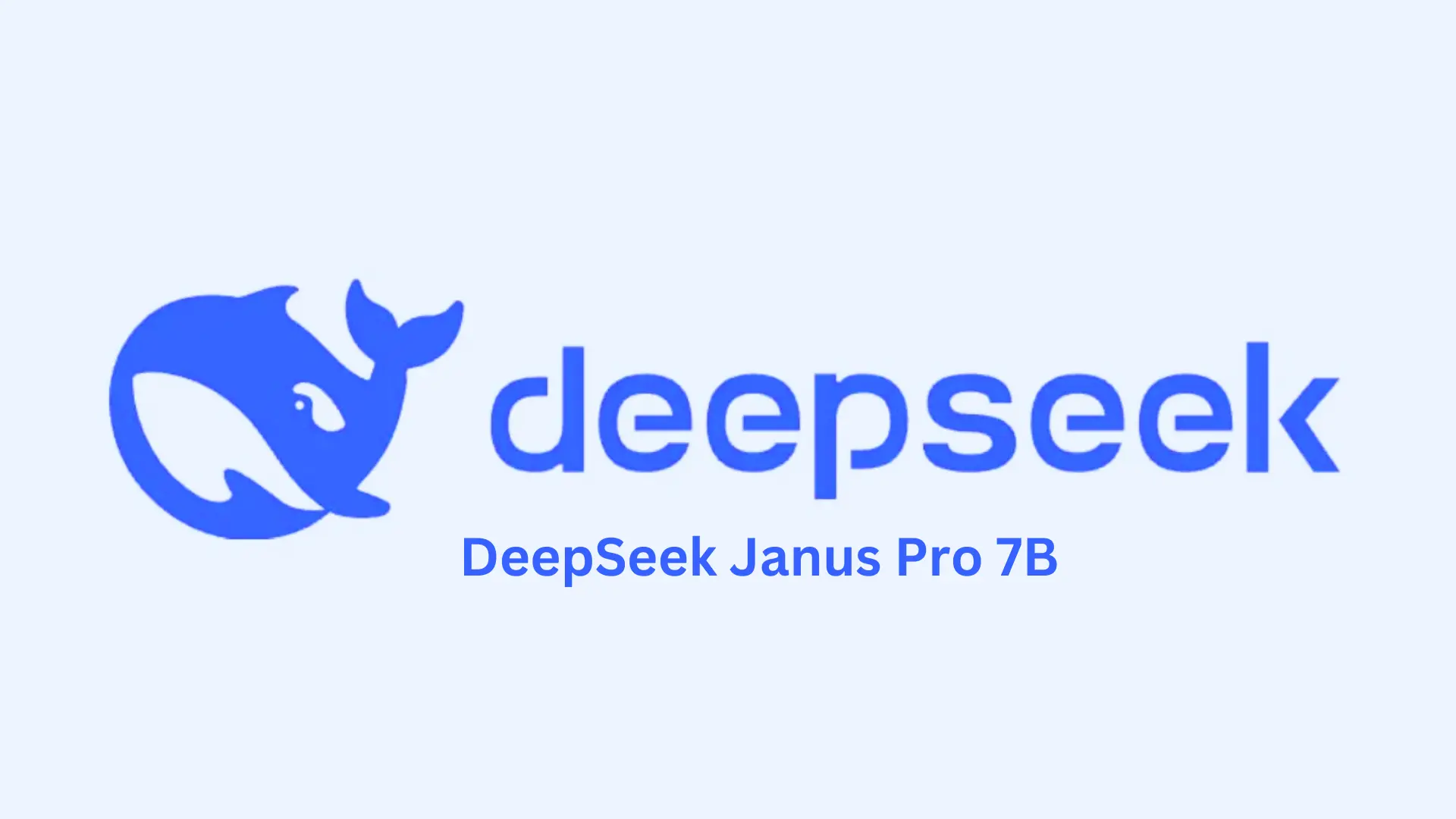After the release of DeepSeek V3 and R1 reasoning feature, The DeepSeek has introduced Janus-Pro, its latest multimodal model designed for text and image generation, and that rivals other top multimodal models.
DeepSeek Janus Pro 7B is an advanced AI model from the Janus Series and it can both comprehend and generate text and images. It can handle both text and images in a single model, you won’t need to switch between tools for two different tasks, so that means It has two capabilities. First capability is image understanding, and the second one is image generation. Because of this capability it is called a Unified Model.
Thinking about what Unified means? Well, it means that this model uses a single transformer-based model architecture to understand, process, and generate responses. Janus Pro is using unified processing, everything is getting handled by a single algorithm only.
Key Concept:
- Unified Processing: A single algorithm handles both text and visual tasks, eliminating the need for separate models.
- Dual Capabilities: It seamlessly decouples image understanding from image generation, ensuring each task is performed with optimal precision.
- Parameter Scale: With 7 billion parameters, the model offers nuanced interpretation and detailed output generation, making it a top choice for complex tasks.
The Janus Series: A Continuum of Innovation
The Janus series is a testament to DeepSeek’s commitment to evolving multimodal AI.
- Janus-1.3B and JanusFlow-1.3B: These variants focus on delivering strong performance with a lower computational footprint, ideal for applications where speed and efficiency are paramount.
- Janus-Pro-1B: Positioned as an entry-level model in the Pro lineup, Janus-Pro-1B provides a balance between resource efficiency and robust multimodal capabilities. It is well-suited for projects that require quick iterations or operate within constrained hardware environments.
- Janus-Pro-7B: As the flagship model, Janus-Pro-7B harnesses the power of 7 billion parameters to deliver superior accuracy and detail. This model is tailored for tasks that demand high-fidelity image generation and advanced text processing.
DeepSeek Janus Pro Paper
Janus-Pro is an advanced version of the previous work Janus. Specifically, Janus-Pro incorporates (1) an optimized training strategy, (2) expanded training data, and (3) scaling to larger model size. With these improvements, Janus-Pro achieves significant advancements in both multimodal understanding and text-to-image instruction-following capabilities, while also enhancing the stability of text-to-image generation. Source: GitHub or Read Complete Paper
Why Use DeepSeek Janus Pro 7B?
What happens in traditional AI systems, If you want to perform any text-related task, you’ll use language models because language models handle text, and for image and video-related tasks, you’re gonna use vision models, and we know that vision models handle images. And for tasks like text-to-image generation, you normally use text-to-image models, which generate images, this is what we all were doing right?
But Janus Pro 7B does everything in one system, one system means in one model only. So, why would you choose separate models for different tasks when you are getting everything under the roof?
Additionally, being an open-source model, Janus Pro 7B offers flexibility for developers and researchers to customize and integrate it into various applications without licensing constraints. To learn more about WHY? We need to look into its key features below.
Smart Visual Processing
DeepSeek Janus Pro 7B employs advanced visual processing techniques to analyze and generate images with high accuracy and detail.
Unified For Text & Images
Janus Pro is Designed to decouples visual encoding into separate pathways while maintaining a unified Transformer architecture
Fast and Efficient Model
Its architecture ensures that it can perform complex multimodal tasks without requiring excessive computational resources.
Benchmark Performance
In benchmark evaluations, Janus Pro has demonstrated superior performance in both text-to-image generation and multimodal understanding tasks. Its accuracy and efficiency in handling complex prompts and generating high-quality images have been highlighted in various studies and comparisons.

Comparison Of Janus Pro 7B With DALL-E3
When compared to models like DALL-E 3, Janus Pro 7B offers competitive performance in image generation tasks. See below the benchmark table.
| Benchmark | Metric | Janus Pro 7B | DALL-E 3 |
| GenEval | Overall Accuracy | 80% | 67% |
| Single-Object Accuracy | 99% | 96% | |
| Positional Alignment | 90% | 83% | |
| Color Alignment | 79% | 43% | |
| Attribute Alignment | 66% | 45% | |
| DPG-Bench | Overall Score | 84.2% | 83.5% |
| Attribute Alignment | 89.4% | 88.4% | |
| Relation Handling | 89.3% | 90.6% | |
| MMBench | Multimodal Understanding | 79.2 | N/A |
Unified Architecture & Decoupled Visual Encoding
At the core of Janus Pro lies an innovative architecture that marries unified processing with a decoupled approach to visual tasks:
- Single Transformer Core: The model uses one comprehensive transformer to process all input, whether text or images. This unified backbone simplifies training and ensures consistency across modalities.
- Decoupled Pathways: Visual encoding is split into two distinct streams. One pathway is dedicated to understanding images (extracting features and context), while the other specializes in generating images from textual prompts. This separation minimizes interference between the tasks and allows for specialized fine-tuning.
- Scalability and Flexibility: The decoupled design not only improves performance but also enables developers to modify or upgrade individual pathways based on specific application needs. For example, enhanced image detail or specialized style conditioning can be achieved without overhauling the entire system.
Comparing Other Ai Image Generation Models
Janus Pro image generator stands out among other AI image generation models due to its unified approach to text and image processing. While other models may specialize in either text or image tasks, Janus Pro 7B’s integrated architecture allows it to excel in tasks that require a combination of both.

How to Access DeepSeek Janus Pro?
Janus Pro models, including both the 1B and 7B variants, are accessible through multiple channels:
Docker Environments: Pre-configured Docker images offer a reproducible environment, simplifying the setup process for experimentation and deployment.
Local Installation: Developers can clone the repository from GitHub, install the necessary dependencies, and launch a demo application powered by a Gradio interface.
Hugging Face Platform: Use the intuitive online interface to experiment with text prompts and image uploads.
| Model | Sequence Length | Download |
| Janus-1.3B | 4096 | Hugging Face |
| JanusFlow-1.3B | 4096 | Hugging Face |
| Janus-Pro-1B | 4096 | Hugging Face |
| Janus-Pro-7B | 4096 | Hugging Face |
If you face any issue while accessing and setting Up Janus Pro you can reach out to DeepSeek support via email [email protected].
Who Can Benefit from Janus Pro 7B?
Marketing Teams
Marketing professionals can leverage Janus Pro 7B to generate compelling visual content based on textual descriptions, enabling the rapid creation of promotional materials and advertisements that are both engaging and visually appealing.
Content Creators
Content creators can utilize the model to enhance their work by generating images that complement their written content, providing a richer and more immersive experience for their audience.
Researchers
Researchers in fields like computer vision and natural language processing can benefit from Janus Pro 7B’s advanced capabilities to explore the intersection of text and image understanding, facilitating studies in multimodal AI applications.
Graphic Designers
Graphic designers can use Janus Pro to quickly generate design concepts and visual elements based on textual prompts, streamlining the creative process and expanding their creative toolkit.
Final Thoughts
DeepSeek’s Janus Pro 7B from the Janus Series represents a significant advancement in the field of multimodal AI, offering a unified approach to text and image processing that opens up new possibilities for various applications. Its efficient design and open-source availability make it a valuable tool for professionals across different industries looking to leverage the power of AI in their work.
